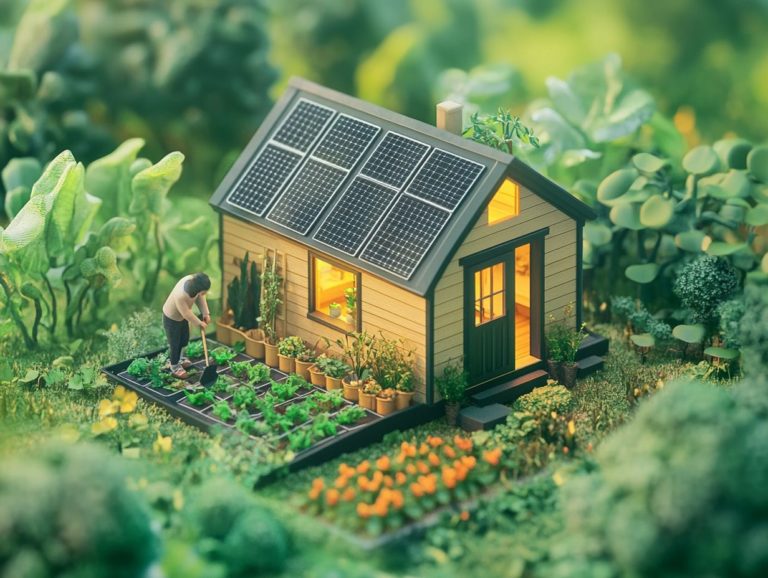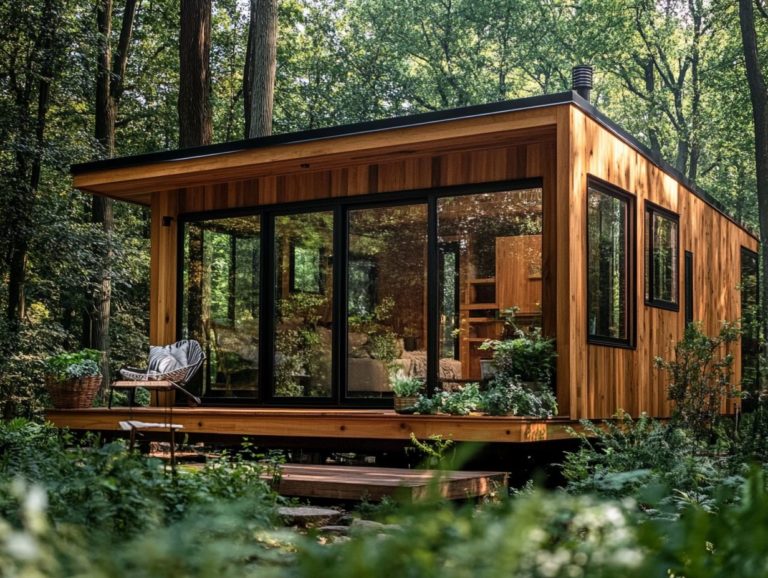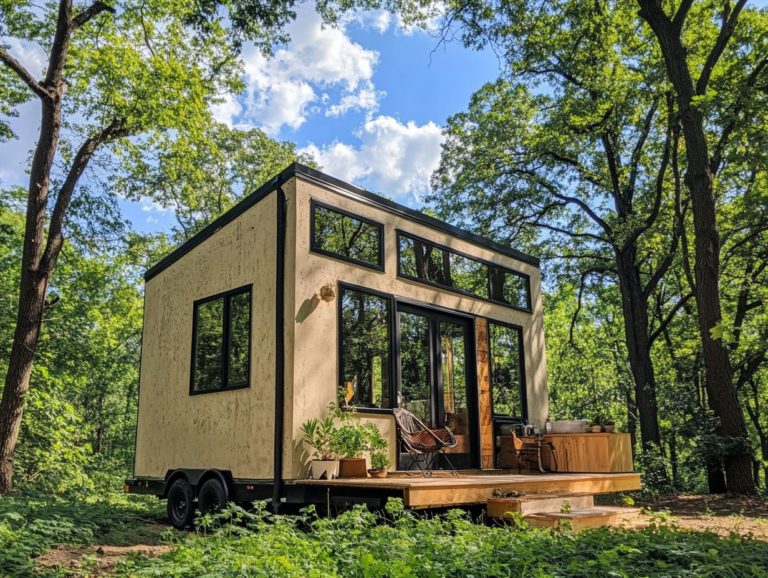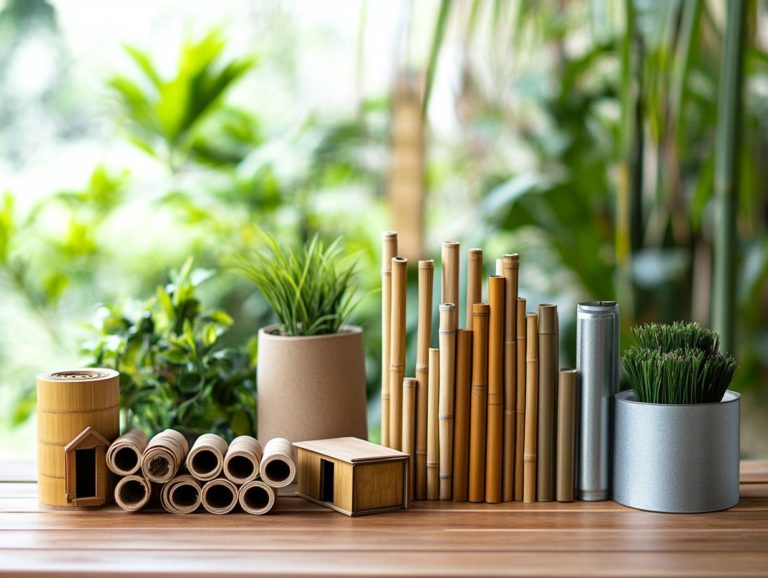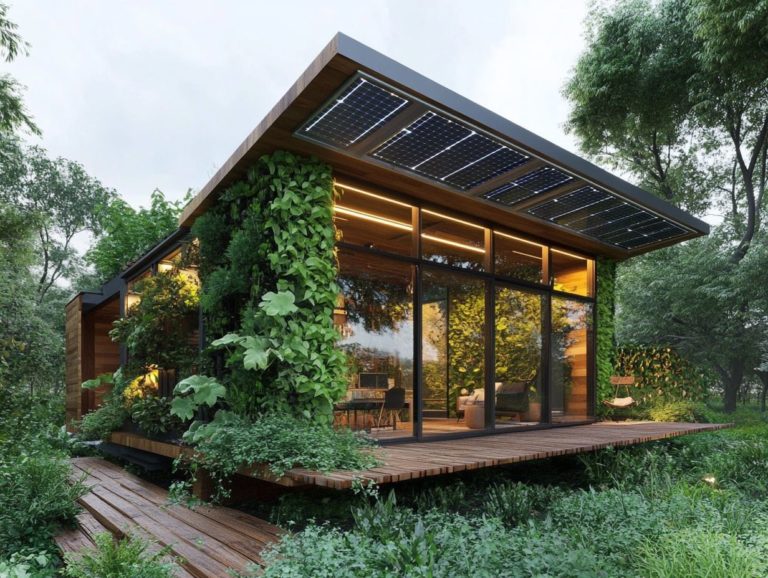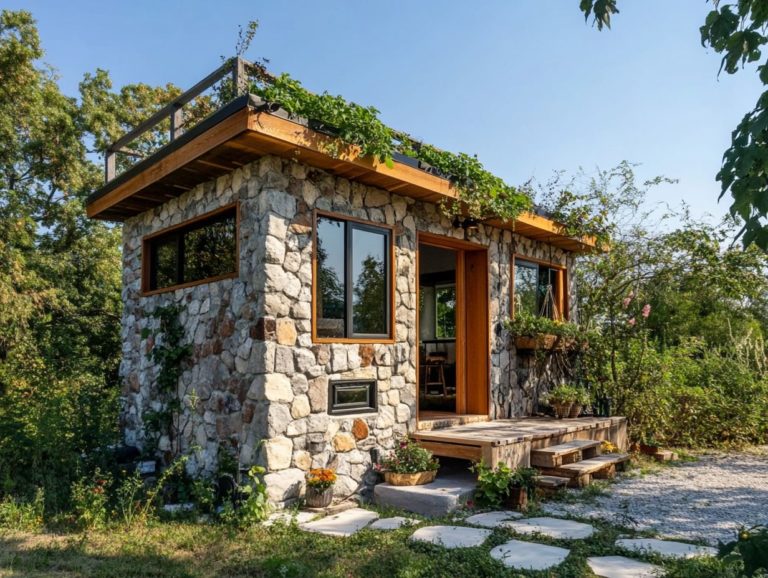Maximizing Space with Sustainable Tiny Home Materials
Tiny homes have captured the imagination of many. They appeal to those who desire simplicity, sustainability, and a lifestyle that stands out from the crowd.
With their compact designs and eco-friendly principles, these homes shrink our environmental footprint and foster mindful living. This exploration delves into the sustainable materials used in tiny home construction, showcasing eco-friendly and recycled options that make a difference.
You’ll discover the benefits of these materials, learn about space-efficient design strategies, and gather practical tips for building and maintaining your own sustainable sanctuary.
Embark on this journey toward greener living and embrace the possibilities that await!
Contents
- Key Takeaways:
- Sustainable Materials for Tiny Homes
- Benefits of Using Sustainable Materials
- Designing for Space Efficiency
- Building and Maintaining a Sustainable Tiny Home
- Frequently Asked Questions
- What are some sustainable tiny home materials that can help maximize space?
- How does using bamboo in a tiny home contribute to maximizing space?
- What are the benefits of using reclaimed wood in a tiny home?
- Can recycled steel be used in tiny home construction?
- How can multi-functional furniture help maximize space in a tiny home?
- What are some tips for maximizing space in a sustainable tiny home?
Key Takeaways:
- Eco-friendly materials: Reduce your carbon emissions and help the environment.
- Repurposed materials: Add charm, cut waste, and save money.
- Space-efficient design: Use multi-functional furniture to maximize space.
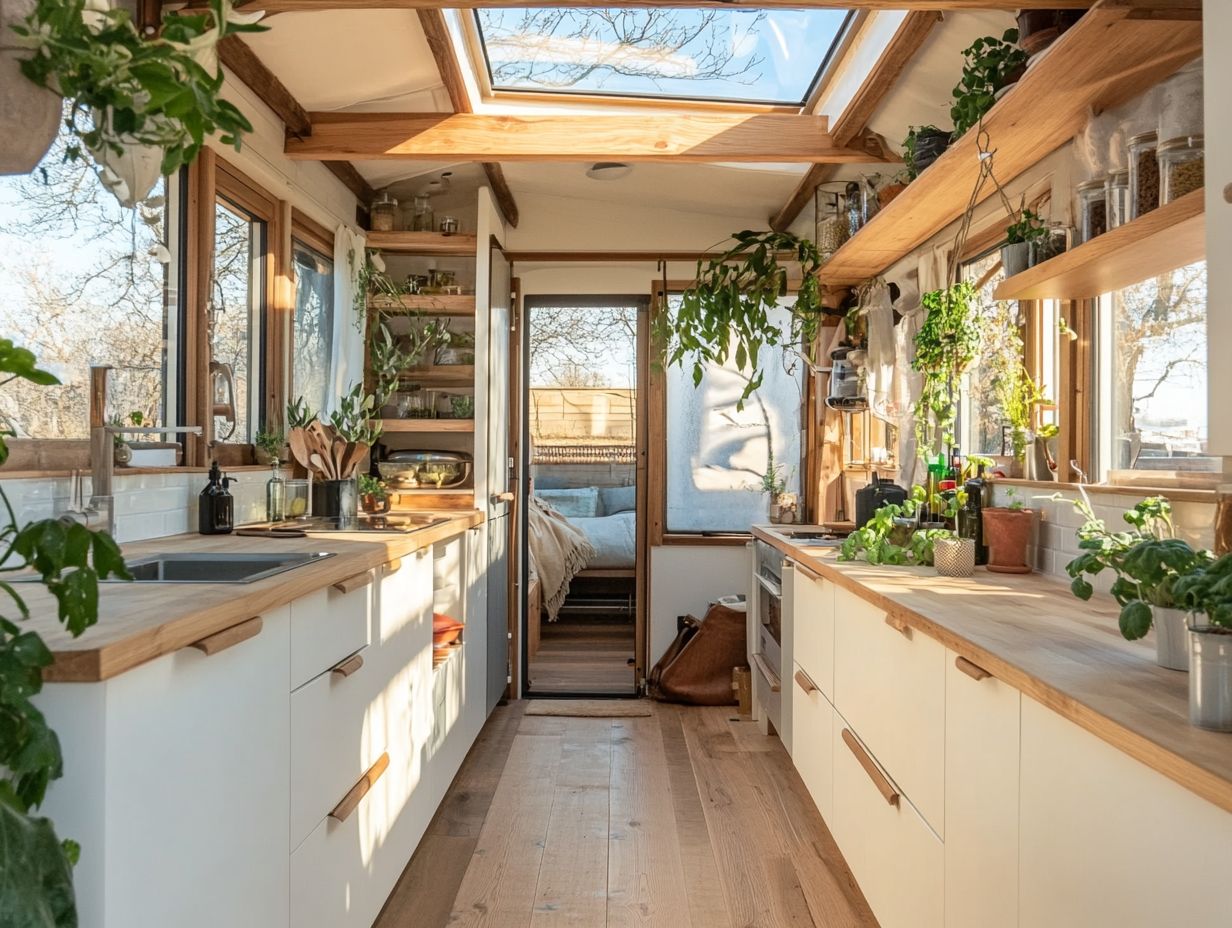
What are Tiny Homes and Why are They Popular?
Tiny homes are your ticket to compact living, typically ranging from 100 to 400 square feet. They’re perfect for individuals or families longing for a simpler lifestyle. This trend has really picked up steam thanks to skyrocketing housing costs and a growing awareness of sustainable living practices that help reduce your carbon emissions.
Tiny homes are celebrated for their eco-friendly design, often featuring innovative elements that maximize space efficiency think multi-functional furniture and reclaimed materials. This makes them especially attractive in urban areas where every square foot counts.
As more individuals embrace minimalism, the appeal of tiny homes only intensifies. They offer a pathway to declutter both your physical space and mental landscape.
Families who have chosen to downsize into tiny homes share stories of significant savings on energy bills. Their experiences highlight an enhanced quality of life. One couple mentioned that moving into a tiny home enabled them to travel more while keeping their finances in check, reinforcing their decision.
Testimonials from many residents express a sense of liberation from the weight of traditional mortgages. They find joy in a simplified lifestyle that prioritizes meaningful experiences over material possessions.
With communities sprouting around tiny home living, this movement reflects a broader cultural shift towards sustainability and intentionality in everyday life.
Sustainable Materials for Tiny Homes
The selection of sustainable materials is essential when constructing tiny homes, as they play a pivotal role in determining the overall efficiency and environmental footprint of your dwelling.
By opting for recycled materials, reclaimed wood, and eco-friendly building supplies, you’re not just minimizing waste; you’re also enhancing the durability and aesthetic charm of these compact spaces. Additionally, optimizing space for tiny house renovations can further improve functionality.
When you prioritize sustainable materials, you create a low-maintenance living environment that reflects your dedication to sustainable living and reducing your carbon emissions. Incorporating natural light and effective materials enhances this commitment.
Are you ready to explore tiny home living? Discover the possibilities today!
Eco-Friendly Building Materials
Eco-friendly building materials are essential in creating sustainable tiny homes. They ensure that your living environment is both healthy and efficient.
Energy-saving appliances and innovative insulation materials optimize energy usage while fostering a comfortable indoor atmosphere. By incorporating elements that maximize natural light, you can enhance your living space and showcase the beautiful harmony between eco-friendly practices and sustainable living.
Take bamboo flooring, for instance. It s not only rapidly renewable; it also boasts durability and aesthetic appeal. This makes it a top-notch choice for energy-efficient tiny homes.
Recycled metal roofing is another standout option. It reflects heat and aids in temperature regulation, which decreases the need for heating or cooling systems.
Using reclaimed wood can also improve indoor air quality by minimizing Volatile Organic Compounds (VOCs), which can affect air quality. By choosing these sustainable products, you can create a home that is both efficient and enriching. This highlights the importance of thoughtful material selections in contemporary construction.
Repurposed and Recycled Materials
Using repurposed and recycled materials is a game-changer for sustainable tiny homes! Imagine incorporating reclaimed wood from old barns or recycled metal roofing. Not only do these choices minimize waste, but they also infuse your home with unique character and history.
This DIY construction approach invites you to unleash your creativity. It allows you to craft a charming yet eco-friendly sanctuary that significantly reduces your ecological footprint.
Online marketplaces like Etsy and Craigslist are treasure troves of affordable options. These platforms make it easier than ever to discover materials waiting to transform into beautiful components of your tiny home.
These platforms have given rise to numerous success stories, showcasing innovative individuals who have turned what others might dismiss as waste into stunning dwellings.
The aesthetic appeal of these homes, with their eclectic designs, reflects their commitment to sustainability. This reflects the life cycle of materials and the core principles of recycling and repurposing.
The benefits are profound. Not only do these practices help reduce landfill waste, they also foster a deeper connection to the resources you choose for your construction journey.
Benefits of Using Sustainable Materials
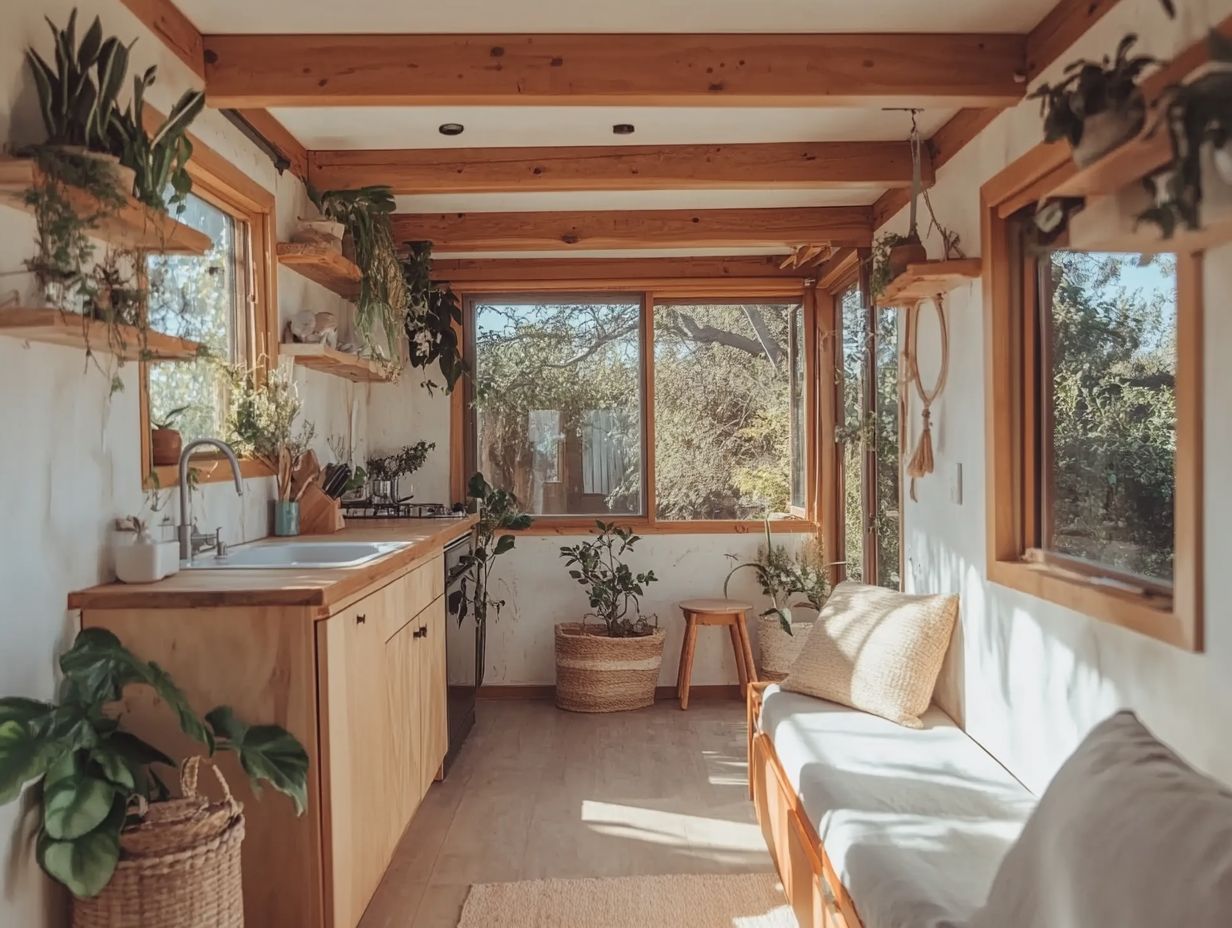
The advantages of utilizing sustainable materials in tiny home construction extend well beyond mere aesthetic appeal. They offer both substantial environmental and financial benefits.
By choosing sustainable materials, you actively reduce your ecological footprint, minimizing waste and promoting responsible sourcing. This thoughtful approach significantly enhances the overall environmental impact of your living space.
These materials often save you money on energy bills. They position themselves as a prudent investment for the future.
Environmental Impact
The environmental impact of using sustainable materials in tiny homes is truly remarkable. It allows you to embrace a low-impact lifestyle.
When you choose eco-friendly and energy-efficient materials, you take a big step towards reducing your carbon footprint while championing sustainable living practices.
This proactive approach conserves natural resources and minimizes waste. It fosters a healthier planet for future generations.
For instance, studies show that using reclaimed wood in construction can save you up to 50% of energy compared to traditional materials. Opting for non-toxic insulation enhances energy efficiency by lowering heating and cooling demands.
Incorporating native vegetation into your landscaping supports local biodiversity. It can also reduce your water usage by up to 60%.
By making these conscientious choices, you play a vital role in promoting environmental health. This underscores the profound importance of sustainable materials in the housing landscape.
Join the movement towards a greener future by choosing sustainable materials for your tiny home!
Cost Savings
Adopting sustainable materials in your tiny home can lead to significant cost savings over time. This positions it as a budget-friendly choice for many homeowners. By investing in energy-efficient materials and appliances, you can dramatically cut your energy costs, ultimately lowering your overall living expenses.
This financial advantage not only makes tiny homes more accessible but also underscores the long-term viability of sustainable living practices. Imagine saving money while living sustainably!
For example, when you utilize special blocks that help keep your home warm or cool, you can see a notable decrease in heating and cooling costs. Studies show that energy consumption can be reduced by up to 50%.
Incorporating low-maintenance materials like fiber-cement siding not only promises durability but also reduces upkeep, potentially saving you thousands of dollars in the long run.
Consider a case study from a tiny home community in Oregon. Residents using sustainable materials reported an average annual savings of $800 in energy costs alone. These compelling examples illustrate that choosing eco-friendly materials benefits not just the environment but also provides substantial economic advantages.
This can significantly enhance your quality of living.
Designing for Space Efficiency
Designing for space efficiency is crucial in tiny homes, where every square inch needs to serve a purpose. This cultivates a functional and livable environment. Adopting a compact design approach allows you to maximize your available space by integrating innovative solutions like multi-functional furniture and clever storage options.
These design strategies enhance usability and foster a more organized and visually appealing living space. This transformation turns your home into a true sanctuary of comfort and style.
Maximizing Every Inch
Maximizing every inch in your tiny home requires thoughtful design choices that prioritize space efficiency and functionality. This means creating layouts that facilitate movement and organization. Each area should serve multiple purposes without sacrificing your comfort or style.
By embracing sustainable living principles, you can create an inviting atmosphere while optimizing your limited space. Consider design elements like built-in furniture, such as Murphy beds or multifunctional coffee tables, and explore the best materials for tiny house construction that exemplify how innovative solutions can blend seamlessly into your living environment.
For instance, a cleverly designed dining table that folds away when not in use can free up valuable square footage. Vertical storage options are essential; utilizing wall shelves or tall cabinets not only maximizes vertical space but also helps declutter surfaces.
This contributes to a more serene atmosphere. Aligning these techniques with eco-friendly materials, such as reclaimed wood or non-toxic finishes, promotes sustainable design practices for tiny houses without compromising aesthetics, further enhancing the appeal of tiny living.
Multi-Functional Furniture
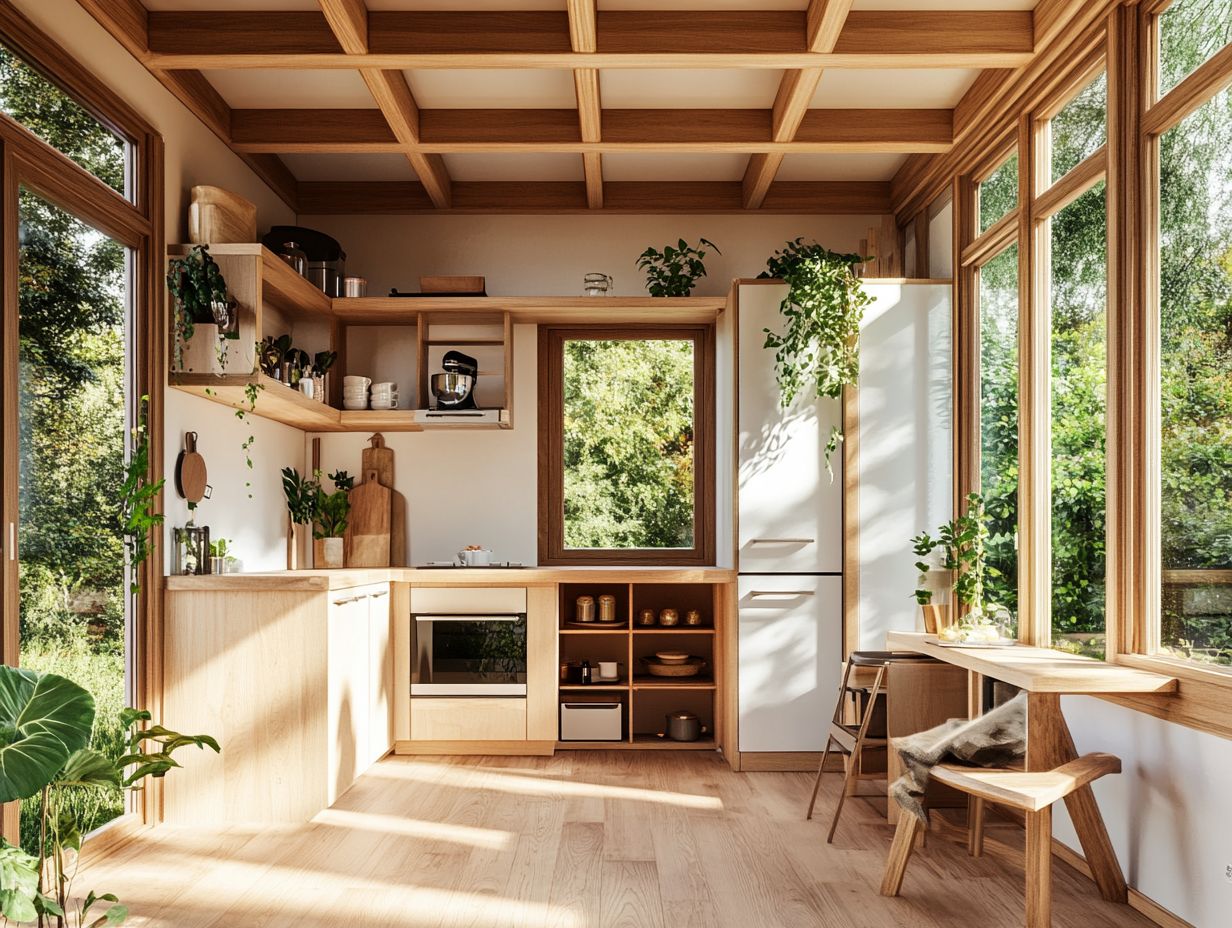
Multi-functional furniture is essential for achieving space efficiency in your tiny home. It enables you to make the most of your living areas. Items like sofa beds, fold-out tables, and storage ottomans can revolutionize a room’s functionality while keeping the design sleek and compact an absolute necessity in smaller spaces.
By incorporating such furnishings, you’re not just enhancing your home’s usability; you’re also embracing sustainable living by minimizing the need for excess items.
Consider adding wall-mounted desks that can be tucked away when not in use. This choice maximizes your available surface area without sacrificing style. Murphy beds, which fold neatly into the wall, liberate valuable floor space during the day, making it easier to navigate your home.
Nesting tables offer the perfect solution for entertaining guests without taking up too much room when stacked together. These clever solutions highlight how versatile furnishings can conserve precious square footage while promoting a minimalist lifestyle truly a must-have in any tiny home design.
Ready to transform your tiny living space? Explore more on sustainable tiny living designs or share your own experiences!
Building and Maintaining a Sustainable Tiny Home
Building and maintaining a sustainable tiny home requires a thoughtful blend of meticulous planning, resourcefulness, and a steadfast commitment to eco-friendly practices. From the outset of your DIY construction journey to ongoing upkeep, adopt strategies that keep your tiny home efficient and in harmony with sustainable living principles.
Integrate smart home technologies to boost your energy management, offering convenience and a delightful reduction in energy costs.
Tips for Construction and Maintenance
When embarking on the journey of constructing a sustainable tiny home, specific tips can significantly elevate your overall experience and results. Select eco-friendly materials and follow local building codes to ensure compliance, enhance efficiency, and improve durability.
Regular maintenance checks are essential for preserving your home s integrity and promoting a long-lasting, low-impact lifestyle.
Prioritize renewable resources like reclaimed wood and low-VOC paints that release fewer harmful chemicals to improve indoor air quality while minimizing your environmental footprint. Incorporate energy-efficient insulation and double-glazed windows to reduce energy costs over time. Additionally, consider reimagining spaces in tiny house living to maximize functionality. Invest in quality tools, such as a moisture meter and a thermal imaging camera, to monitor your home’s structural health effectively.
Understanding and adhering to local building codes saves you from potential fines and boosts safety and resale value. Making informed choices during construction and maintenance paves the way for a sustainable, resilient living space that aligns with your eco-conscious values.
The Future of Sustainable Living with Tiny Homes
Tiny homes promise a bright future for sustainable living as more individuals and families embrace this concept in urban areas and beyond. Driven by a desire for eco-friendly practices and a reduced carbon footprint, tiny homes are emerging as a viable solution to housing shortages and environmental concerns.
Advancements in renewable energy and sustainable materials are set to redefine modern living for generations to come. You can see this shift in various case studies where tiny homes feature solar panels, rainwater harvesting systems, and composting toilets, all demonstrating a lifestyle that minimizes waste while maximizing efficiency, including smart design solutions for tiny house living.
Innovations like smart home technology enable residents to monitor their energy consumption, further emphasizing sustainable living principles. As projections suggest a burgeoning market for tiny homes, local governments are adapting zoning laws to accommodate this trend, seamlessly integrating tiny communities into urban planning.
These developments underscore the increasing popularity of tiny homes and solidify their role as a vital component in the journey toward a more sustainable future. Explore tiny home living and research more about sustainable materials to become part of this movement!
Frequently Asked Questions
What are some sustainable tiny home materials that can help maximize space?
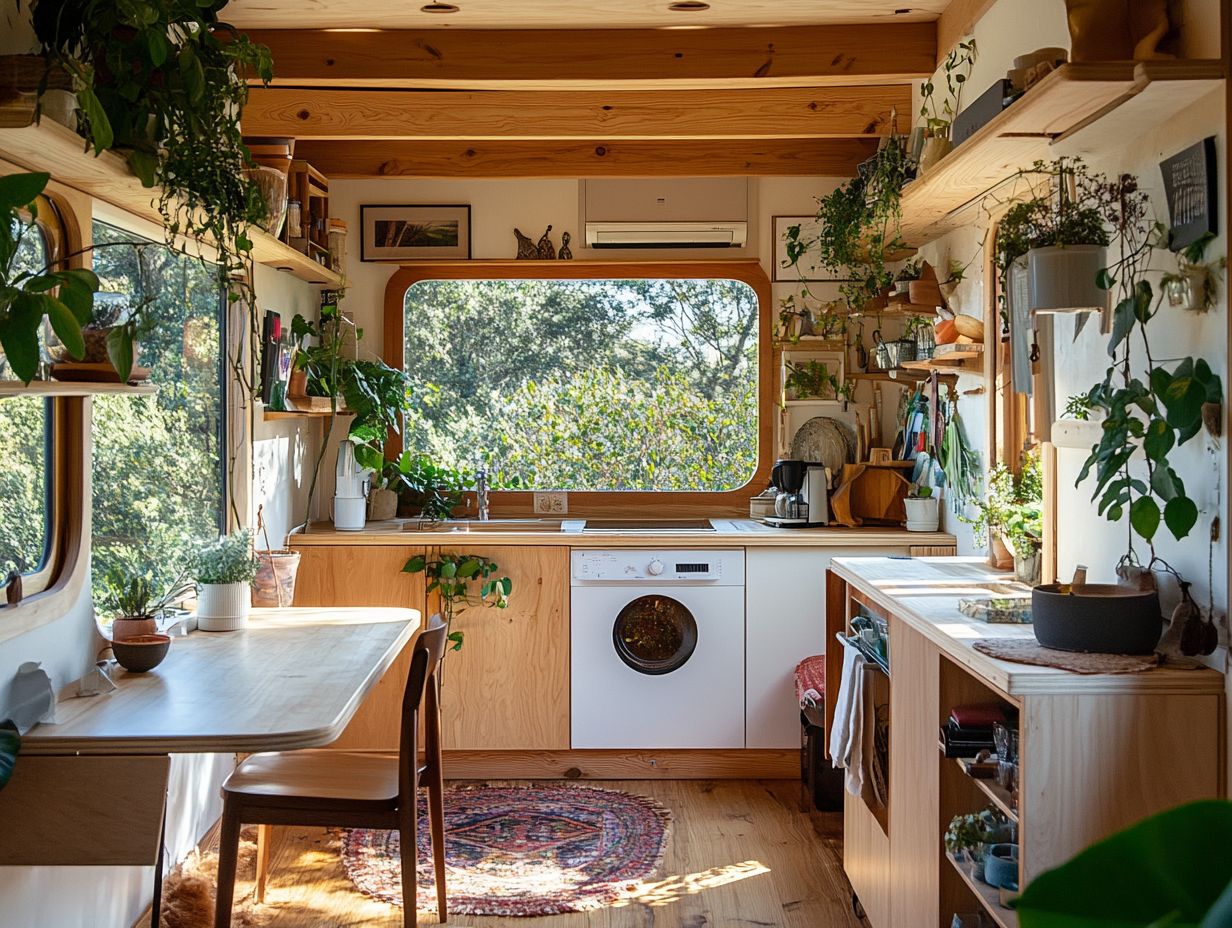
Some sustainable materials that can help maximize space in a tiny home are bamboo, reclaimed wood, and recycled steel. These materials are eco-friendly, durable, and can be used to create multi-functional furniture.
How does using bamboo in a tiny home contribute to maximizing space?
Bamboo is a versatile material that can create space-saving furniture such as foldable tables, chairs, and shelves. It is lightweight, making it easy to move around and ideal for small spaces.
What are the benefits of using reclaimed wood in a tiny home?
Reclaimed wood is salvaged from old buildings, adding character and charm to a tiny home. It is a sustainable option that reduces the demand for new wood and can be used to create custom pieces that maximize space.
Can recycled steel be used in tiny home construction?
Absolutely! Recycled steel is an excellent choice for tiny home construction. It s strong and durable, perfect for frames, walls, and roofs.
How can multi-functional furniture help maximize space in a tiny home?
Multi-functional furniture saves space by serving dual purposes. For example, a bed with built-in storage or a table that converts into a desk does just that!
What are some tips for maximizing space in a sustainable tiny home?
Use sustainable materials and consider multi-functional furniture. You can also utilize vertical space and let in natural light for a more open feel.
Implement smart storage solutions and make decluttering a habit. Keeping your space tidy will maintain that airy atmosphere.

